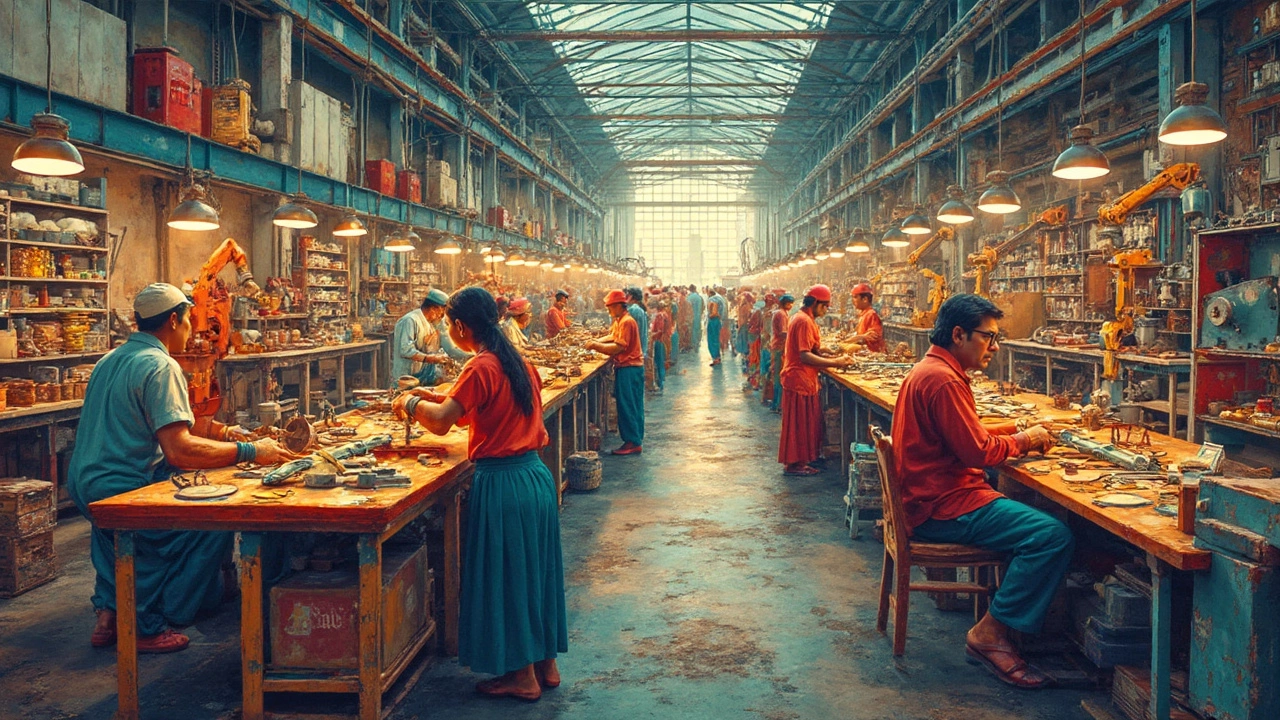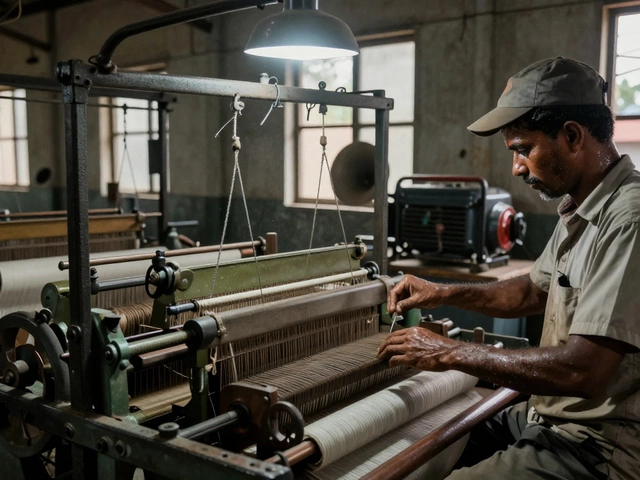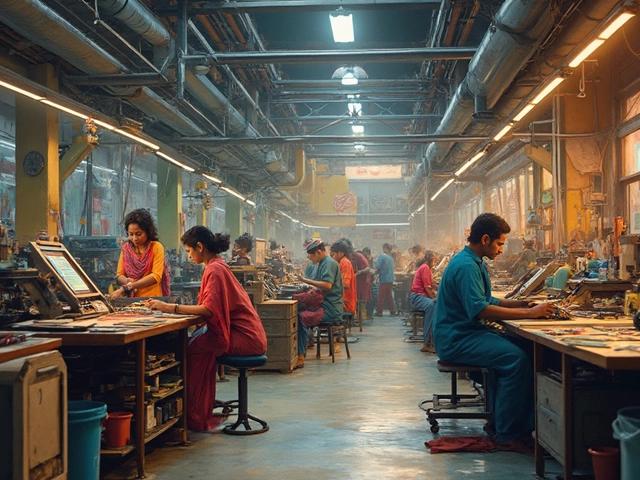When it comes to getting ideas for a manufacturing business, knowing the right type of manufacturing is super crucial. Why? Because each type has its own vibe, costs, and efficiency levels. Let's break down the five types to give you a clearer picture of what might work best for you.
If you're thinking about creating unique, personalized products, custom manufacturing might be your jam. It's all about making designs tailored to specific needs, which can be a cool way of standing out from the crowd. But keep in mind, each order is a one-off, so planning is key here.
- Custom Manufacturing
- Batch Manufacturing
- Mass Manufacturing
- Continuous Manufacturing
- Additive Manufacturing
Custom Manufacturing
So, what is custom manufacturing all about? It's like playing the personal tailor in the manufacturing world. This approach is all about making specialized products tailored specifically to individual customer needs. Think of it as designing a suit that's perfectly fitted. It's about uniqueness, customization, and meeting specific demands.
Custom manufacturing is often common in industries where specifications are highly specialized. For instance, in aerospace, companies might need specific components that fit just a particular model of an aircraft. Similarly, in the world of prosthetics, products are often uniquely designed to match a patient's needs.
Pros and Cons
This type comes with its pros and cons. On the plus side, you can charge premium prices due to the unique, personalized service offered. On the downside, it's less scalable compared to mass manufacturing. You're not making hundreds of the same item, which means you might face higher per-unit costs.
Key Considerations
If you're considering diving into custom manufacturing, there are a few things to think about:
- Material Costs: Specialized projects often mean specialized materials, which can be more expensive.
- Skilled Labor: Expertise and skill level can make or break your bottom line here.
- Lead Times: Make sure your customers know it might take a bit longer, as customization takes time.
In terms of business ideas, custom manufacturing is perfect if you thrive on creativity and enjoy producing unique items. Maybe you’re into crafting unique furniture pieces or designing custom bikes. It's about finding a niche and catering to it with quality and dedication.
Batch Manufacturing
Batch manufacturing is like the Goldilocks of production methods, offering a blend of efficiency and flexibility. It's perfect for businesses that need to crank out products in limited quantities, kind of a middle ground between custom and mass manufacturing.
So, how does it actually work? Imagine you're making cookies, not just one but a whole batch. You prep the ingredients, bake them all at once, and package them together. That's exactly how batch manufacturing operates in a factory setting, allowing companies to produce a specific number of items each run.
Advantages of Batch Manufacturing
- Cost-Effective: Because you're making products in bulk, you save on costs for materials and labor compared to making one product at a time.
- Flexibility: Easy to switch gears if market demand changes. You can tweak designs between batches without stressing about a massive inventory of outdated products.
- Quality Control: Easier to maintain and monitor, ensuring each batch meets quality standards.
When to Use Batch Manufacturing
This method is ideal if you produce goods that have a consistent demand throughout the year, but might see increased spikes during certain seasons. For example, seasonal decorations or limited edition items.
Batch Manufacturing Stats
| Industry | Typical Batch Size |
|---|---|
| Food and Beverage | 1000-5000 units |
| Pharmaceutical | 10,000 pills |
Knowing when and how to apply batch manufacturing could really give your business the edge, helping you to meet customer demands without wasting resources. It's a reliable choice when you need the perfect balance between production costs and product flexibility.

Mass Manufacturing
Mass manufacturing is all about producing large quantities of a product in a short amount of time. It's the go-to choice for many industries that need to churn out tons of goods, like automobiles, electronics, and even packaged foods. The main idea here is efficiency—getting as much done as fast as possible while keeping costs low.
Ever wonder how your favorite cereal gets to your table? Yep, that's mass manufacturing at work. By using production methods like assembly lines, businesses can produce hundreds, even thousands, of identical items without breaking the bank. What's cool is that this process offers uniformity—all products look and function the same, which is great for maintaining brand quality.
The Pros of Mass Manufacturing
The big advantage is cost-effectiveness. Once the machinery is set up, the cost per unit drops significantly, which can lead to attractive pricing for consumers and larger profit margins for businesses. Plus, because everything is the same, maintenance and training are easier and faster.
Tackling the Downsides
But it's not all sunshine. One major downside is rigidity. If the market trends shift and you need to tweak your products, it can be tricky since mass manufacturing thrives on consistency. Also, initial setup costs can be hefty because all the specialized equipment doesn't come cheap.
| Mass Manufacturing Key Points |
|---|
| High Efficiency |
| Low Cost Per Unit |
| Consistent Product Quality |
Despite the challenges, for businesses with high demand and straightforward products, mass manufacturing is often the smartest route. Just make sure your production methods align with your business goals, and you're golden.
Continuous Manufacturing
Continuous Manufacturing is pretty much the lifeline for industries looking to keep the assembly line moving without breaks. It's used to produce goods in an ongoing, unending stream, which is pretty efficient when demand is consistent and high. But, it's not just about churning out products; it's about doing so with steady quality and optimized costs.
Think of mass production of things like chemicals, paper, or even some types of foods. These systems run around the clock and rely on sophisticated machinery to maintain the flow without hiccups. If you've ever wondered how toothpaste or shampoo gets made in large quantities, this is the strategy at play!
The Benefits
The major perk here is consistency. Once the system is set up and running, the output remains steady, saving tons on labor and time. Plus, with today’s technology, companies often monitor these processes using advanced software to keep everything in check and avoid any unwanted stops.
This method shines in industries where body-moving volumes and maintaining precise standards are key. It avoids the costs associated with ramping up production and starting things from scratch.
Where It Fits Best
If you’ve got a business that requires high-volume production and can support the initial setup costs, then continuous manufacturing might just be your ticket to success. It's ideal in sectors where machinery can work at the forefront without needing constant human intervention.
Challenges
However, it isn't all smooth sailing. The setup and machinery are often an expensive investment, and they usually require a significant commitment. Stopping the process can be both costly and time-consuming, so planning and stability are key players here.
Overall, this method is a fascinating blend of efficiency and consistency, shaped by innovation and technology. It's no wonder many big players in various industries prefer this model for their manufacturing needs.

Additive Manufacturing
Additive manufacturing, more commonly known as 3D printing, is like something straight out of science fiction. It's genuinely one of the most flexible manufacturing processes out there. Imagine turning digital blueprints into physical objects layer by layer. Yup, that’s basically what this method is about.
What makes it super cool is its ability to create complex designs without the need for traditional tools or molds. Plus, it’s great for customization. Need a small batch of unique parts? Additive manufacturing has got you covered.
Types of Additive Manufacturing
- Stereo lithography (SLA): One of the original forms where liquid resin is cured by a UV laser.
- Fused Deposition Modeling (FDM): Uses a continuous filament of a thermoplastic material.
- Selective Laser Sintering (SLS): Utilizes a laser to fuse powder particles.
In terms of materials, you’re not just limited to plastics anymore. Metals, ceramics, and even food and bio-materials can be 3D printed these days.
The cost? Well, the initial setup can be pricey, mainly due to the high cost of the printers themselves. But here's the kicker: it can end up saving you money in the long run, especially for small production runs or prototypes. No need for tooling changes, and you can iterate designs quickly.
Benefits of Additive Manufacturing
- Customization: Great for tailoring products to customer specifications.
- Reduced Waste: Traditional methods often shave away material, but not this one. Less waste is always a win!
- Fast Prototyping: Need to test a design quickly? This method speeds up the development cycle.
Here's a quick look at some stats:
| Material | Typical Use | Cost Per Kg |
|---|---|---|
| Plastic | Prototypes | $25 |
| Metal | Aerospace parts | $400 |
If you're looking to innovate and bring new products to market fast, then diving into the world of additive manufacturing might be the exact adventure you need.






